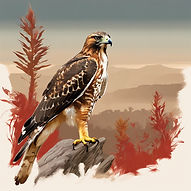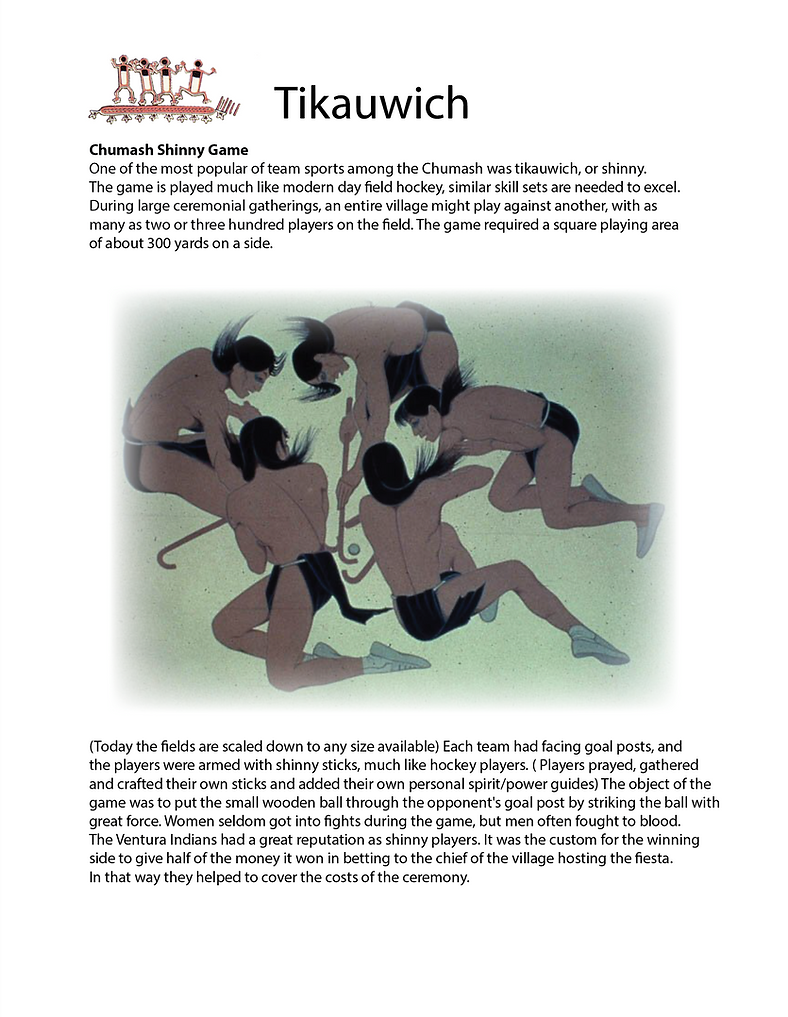
CHIA
California Habitat for Indigenous Arts
Indigenous Sports Program: Shinny Clinic, Games and Tournaments
Seasons: May- June - July - August
In traditional times most California Native Tribes played shinny for ceremonial and trade purposes during the equinox and solstice times of the year. Shinny (Stick Ball) is played although out North America and shares its roots with the Eastern version “ Lacrosse” from the Iroquois Nation.
CHIA's Indigenous Sports Program was created to re-introduce Native American games and sports back into Native American contemporary culture both on and off the reservation.
We will be working in partnership with the Native American Shinny League to host Shinny workshops and Clinics beginning this spring and summer 2025.
Our staff Shinny players and captains will introduce the history and origins of the original Native American stick ball game “ Shinny” and both demonstrate and play the game with the participating youths and family members of all ages.

Native American Shinny League

NASL 2018 Promotional Reel
The Native American Shinny League : NASL Mission
In traditional times most California Native Tribes played shinny for ceremonial and trade purposes during the equinox and solstice times of the year. Shinny (Stick Ball) is played although out North America and shares it’s roots with the Eastern version “ Lacrosse” from the Iroquois Nation.
The NASL was created to re-introduce Native American games and sports back into Native American contemporary culture both on and off the reservation.
To promote a healthy lifestyle while building confidence, self -esteem and Tribal pride within the
Native youth communities.
To inspire the next generation of Native American College -Athletes
To create an inroad to compete globally in the FH Olympics and the FH World-Cup Games.
Summer 2024 Shinny Workshop
Shinny Clinic Overview:
Level One: The NASL Captain and players will introduce the games origins and history
Level Two:
Our four player/instructors will set up the kids in groups of four starting with the games basic
principles. How to hit, block, pass and strike the ball. Then will learn how to run and pass to a partner who has enter the strike zone. After getting familiar with the game play our instructors will start explaining the rules of engagement and guidelines set forth both traditionally and by the World field Hockey League.
Level Three: Youths and members will be split up in teams to play a scrimmage Shinny Match. There will be one to two Referees on the field. The field will be on grass and 50 yard in length with two goal post on each side.
What to bring: Running shoes and work out attire. I shinny stick if you have and some water.
The Native American Shinny League league will start development of the western conference division by launching a summer reservation exhibition tour. The NASL Western Conference devisions will consist of teams from local California tribal regions and reservations. Ranging from San Diego to Ukiah California and throughout the southern, central and northern interior regions - Southern CA - Central CA - Northern - CA represent the Western Conference. Tribal Sponsorship Each team will be sponsored by the tribe or a tribal affiliate in their region. Some teams my not have a reservation but are recognize as a band and or tribe. All Reservation teams will provide a playing field and host home games on the reservation. Each team will provide their own uniforms and Equipment. This includes transportation and lodging tor road/away games.

Shinny Stickball “Tikauwich” -to play ball.
by Aleqwel Mendoza
As California Natives we are all faced with the challenges to inspire our youth to continue carrying on our traditions while providing them with the tools they need to maneuver through modern day life. Connecting them to their cultural roots when and where ever we can. In traditional times, playing games and sports was a crucial part of our Native culture. Today, games are as important as ever. The gradual shift to a more sedentary lifestyle has highlighted the need to reawaken interest in physical activity, especially among Native youth. Promoting games and sports is an important part of improving the health and well-being of Native populations.The shinny games have roots in ancestral tests of strength and movement that reinforced group cooperation, developed agility, coordination and sharpened survival skills that could help the people be effective providers and caretakers. Traditional team sports like Shinny promote a healthy social lifestyle while building confidence, self -esteem and Tribal pride within the Native youth communities. In traditional times most California Native Tribes played shinny for ceremonial and trade purposes during the equinox and solstice times of the year. Shinny (Stick Ball) is played although out North America and shares its roots with the Eastern version “ Lacrosse” from the Iroquois Nation.
This is a exciting high energy traditional sport that is just as fun to watch as it is to play. Making it a great spectator sport as well. A great way to introduce at cultural events and ceremonies. in times past Native communities depended on elders to teach games to youth. The games taught life skills needed to survive in the world. When Indian children were removed from their homes and sent to boarding schools, teaching through games was lost. When and if youth returned to their tribes, they lacked the cultural knowledge developed through traditional games that enabled them to protect and provide for their families.Native games teach social skills and expectations. The games teach us how to treat one another: how men and woman balance eachother and how to treat children; to teach a young person or warrior he/she/or them is expected to protect, to provide, and to be humble to their own people, using ones knowledge, skills and strength to protect themselves, family and community. This is what Native games teach us.”The rules are simple and few which makes it easy to learn. It is a wonderful game – there are elements that let the individual play intensely, while there are team and defensive strategies to help get the individual with the ball to the goal.”Today, thanks to continued research in the field of neuroscience, we know that games of intuition and chance that promote observational and sensing skill development are just as important as physical strength and endurance. Holistically, humans need each, in order to thrive in a world with constant assessment and adjustment to an ever-changing and fast-paced environment. No matter your personal or professional background, age or ethnicity, traditional Native games bring us all into one circle as a community enhancing the physical, psychological, and spiritual journey of each participant.












